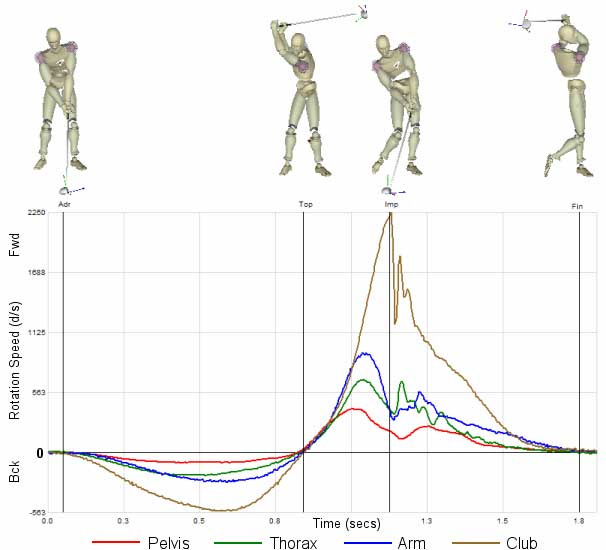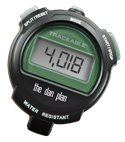The golf kinematic sequence
This past weekend I learned a lot about the golfers body, swing mechanics and how the impact zone affects ball flight. I spent three days in Seattle attending a two-day Titleist TPI seminar and a TrackMan University class and had my mind expanded in a lot of ways. Both of these classes are on the cutting edge of golf thought and are very worthy of attendance if ever in your area.
Sitting here trying to figure out how to craft a blog about the entire trip is a bit daunting. It’s like trying to sum up all of the original Star Wars movies in a paragraph. You can do it, but it does a grave injustice to the body of work.
Where does one start when they just returned from 8 hours of intensive TrackMan data analysis and covering a 225 page Titleist fitness manual? I thought about this for a long time and decided that the kinematic sequence was an appropriate starting point. After all, perfecting that is one of the biggest differences between me, you* and Ernie Els. *(ok, well, I know you read this Tiger and Kuchar, and when I say “you” I am not directly referring to you guys in particular, rather the non-touring pros out there like myself.)
So today we break the ice a bit and talk about the kinematic sequence. What is the kinematic sequence? I am sure there are a lot of ways to describe and define this concept, but how I see it the kinematic sequence is the flow of power throughout the swing from the backswing to transition to follow through. It is the order in which you fire your body. For a visual, check out this graph:

The colors at the bottom are the knowledge nuggets. Your body is separated into different parts in any type of swinging, throwing, kicking or punching movement and how you time the release of these is crucial to how you deliver the blow.
I am about 99 percent certain that this is a graph of Ernie Els swing. You can see that it’s nearly perfect in transition and the applied force. Whoever this is can truly optimize their contact.
The swing starts with the backswing at the 0 point on the chart. When you take the club back the numbers cross below the line into the negative zone as you wind up your body like a spring. Then, at the transition point, or top of the swing all movement comes to a stop and the downswing is on the verge of happening. If you were able to zoom in at that point you can see that all body parts don’t necessarily start moving at the exact same time. A lot of golfers differ at this point, but one general finding is that the better golfers start in this order: Pelvis, Thorax, Arm and then club. The timing can be slightly different and there are a few who start all together, but in general that order builds the most efficient power.
From that point, the next important aspect is stopping. Apparently, the faster you can stop moving correlates with the faster you can move in the first place. If you look at this chart, the pelvis shot out of the gate first and came to a peak of energy first as well as slowed down the quickest. The same is true with the other body parts, having the club reach maximum speed last and slow down a hair after everything else. The entire downswing happens in less than a second, so these time differences are very minute.
I find it important to understand this concept. It is not something that you can literally think about during the swing as these cues happen in milliseconds, but the more you know the more you can work on and the better you can get. That thought was why I attended these conferences in the first place: a hunger for improving is being fed by knowledge of the body and game.
It all boils down to mechanics. Your body is a coil and when wound up you don’t want to let the whole thing come undone by springing your hands or arms first, you want to keep that potential energy stored as long as possible to really whip that club head through the ball.
I better understood how to use this information while out on the course yesterday. After hitting an askew tee shot I thought about how I was winding up and releasing my energy and realized that I wasn’t coiled around my spine and when I went to swing the energy from my pelvis wasn’t translating in my shoulders/arms correctly and that was causing the club to push out away from my body. It was a text book example of inefficiency. After that moment I didn’t do it correctly every time, but when I coiled and unleashed well I was striking the ball much better. The force applied to the ball was increasing and in turn so were my distances with tee shots.
The next step to this is understanding how delivering the club to the ball influences ball flight and directionality, but that will have to wait until another day as I need to do a bit more homework myself before reporting on the TrackMan class. Lots of fun stuff to come!
This blog brought to you by Philosophiae Naturalis Principia Mathematica, for without this work kickstarting the modern period of mechanics none of this would be possible.

